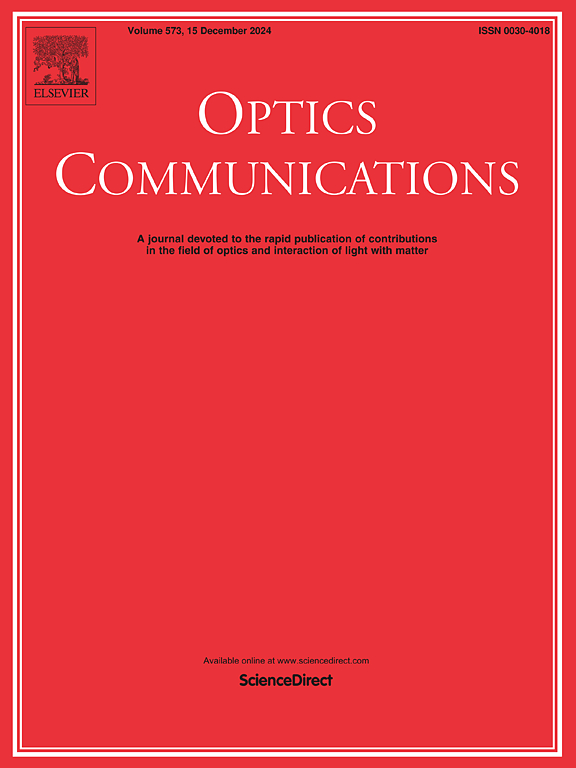基于Dirac半金属的手性太赫兹多功能波前操纵超表面
IF 2.2
3区 物理与天体物理
Q2 OPTICS
引用次数: 0
摘要
可调手性超表面为多功能太赫兹器件提供了更多的选择,引起了研究人员的广泛关注。本文提出了一种基于狄拉克半金属(DSM)的双裂环可调谐手性超表面。对于入射的线极化波,DSM超表面在1.36太赫兹下充当线性到圆(LTP)偏振变换器。对于入射的圆极化波,可以通过改变DSM的费米能级来动态控制超表面的强手性。手性超表面在1.39 THz下的最大圆二色性(CD)为0.95。此外,基于Panchalatnam-Berry (PB)相理论,通过合理设计具有定制相分布的元原子,可以实现光束聚焦、偏转和分裂等多功能应用。此外,通过排列原超表面和镜像超表面的元原子,实现了可控的近场成像。这些成果在太赫兹通信、图像处理等领域具有广阔的应用前景。本文章由计算机程序翻译,如有差异,请以英文原文为准。
Chiral terahertz multifunctional metasurface based on Dirac semimetal for wavefront manipulation
Tunable chiral metasurfaces provide more options for multifunctional terahertz devices, which has attracted extensive attention from researchers. In the paper, we proposed a double split ring tunable chiral metasurface based on Dirac semimetals (DSM). For linearly polarized waves are incident, the DSM metasurface acted as a linear-to-circular (LTP) polarization converter at 1.36 THz. For circularly polarized waves are incident, the strong chiral properties of the metasurface can be dynamically controlled by changing the Fermi level of the DSM. The maximum circular dichroism (CD) of the chiral metasurface is 0.95 at 1.39 THz. In addition, based on the theory of Panchalatnam-Berry (PB) phase, multifunctional applications including beam focusing, deflection, and splitting can be achieved through the reasonable design of meta-atoms with tailored phase distributions. Furthermore, the controllable near field image was realized by arranging the meta-atoms of the original and mirror metasurface. These results are expected to have broad application prospects in terahertz communication, image processing and other fields.
求助全文
通过发布文献求助,成功后即可免费获取论文全文。
去求助
来源期刊

Optics Communications
物理-光学
CiteScore
5.10
自引率
8.30%
发文量
681
审稿时长
38 days
期刊介绍:
Optics Communications invites original and timely contributions containing new results in various fields of optics and photonics. The journal considers theoretical and experimental research in areas ranging from the fundamental properties of light to technological applications. Topics covered include classical and quantum optics, optical physics and light-matter interactions, lasers, imaging, guided-wave optics and optical information processing. Manuscripts should offer clear evidence of novelty and significance. Papers concentrating on mathematical and computational issues, with limited connection to optics, are not suitable for publication in the Journal. Similarly, small technical advances, or papers concerned only with engineering applications or issues of materials science fall outside the journal scope.
 求助内容:
求助内容: 应助结果提醒方式:
应助结果提醒方式:


